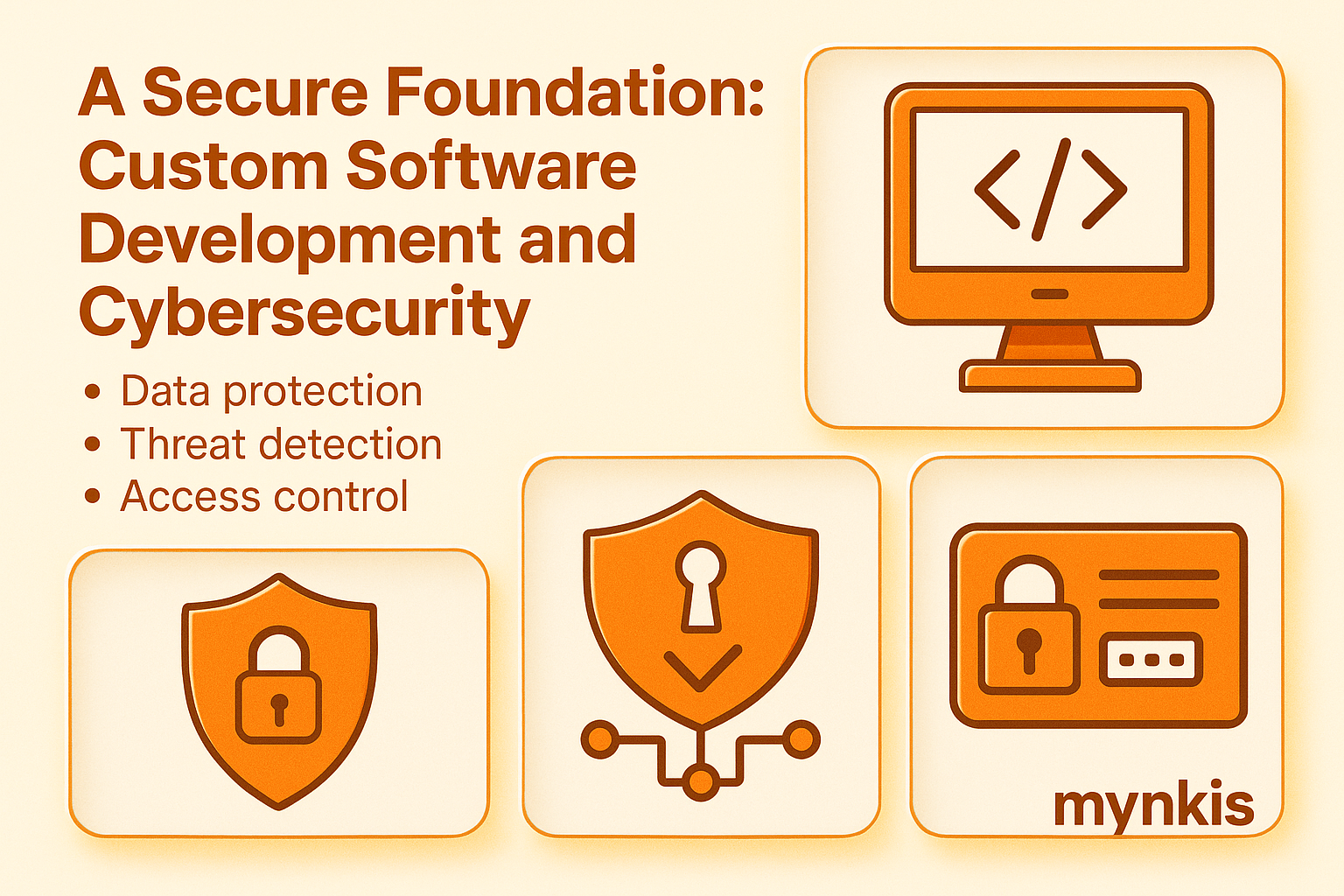Schedule a Demo
When building custom software, it's easy to overlook cybersecurity in the excitement of developing your MVP. Yet, security must be embedded from the very outset, not bolted on later like some optional accessory. In my experience working with countless founders, I've found that building a strong security framework early can prevent a myriad of future headaches and vulnerabilities.
Every business, from emerging startups to established enterprises, faces its own unique cybersecurity risks. It's essential to conduct a thorough risk assessment, considering factors like the nature of your data, your target users, and your business model. For instance, a fintech startup will have vastly different security needs than an e-commerce platform. By understanding these nuances, you can tailor your cybersecurity strategy to protect what matters most to your business.
Incorporating security at every stage of your software development lifecycle is not just a best practice; it's a necessity. From design and development to testing and deployment, security must be a core consideration. Implementing security checkpoints and regular audits helps ensure that vulnerabilities are identified and addressed before they become a threat. This approach can be as simple as having a security review during code commits or as extensive as engaging penetration testers to simulate attacks.
The choice of security framework can be a deciding factor in the robustness of your software. Frameworks like OWASP (Open Web Application Security Project) provide guidelines and tools to help developers build more secure applications. Selecting a framework that aligns with your development environment and technical capabilities can significantly enhance your software's security posture. Of course, no framework is a silver bullet, and it’s crucial to customize and enhance these tools based on your specific risks and needs.
Encryption plays a pivotal role in safeguarding data, especially in custom software development. It's not just about protecting data at rest but also securing it in transit. Utilizing strong encryption protocols like TLS for communications and encrypting sensitive data stored on your servers can prevent unauthorized access and data breaches. Remember, encryption standards evolve, and staying updated is part of your ongoing commitment to security.
Integrating cybersecurity isn't just about technology; it's also about cultivating a culture of security awareness. Your development team, from developers to QA testers, should be well-versed in the latest security threats and best practices. Regular training sessions and security workshops can foster a collective responsibility for security among your staff. When every team member understands the importance of security, it becomes an integral part of your software development process.
Security testing should be an integral part of your software development process. Automated security scanning tools can help identify common vulnerabilities, but they should be complemented by manual penetration testing. These tests simulate attacks to uncover potential security weaknesses that automated tools might miss. Engaging external security experts for these tests can provide an outside perspective on the robustness of your security measures.
Don't overlook the importance of compliance with industry regulations and standards. Depending on your market and data type, standards like GDPR, HIPAA, or PCI-DSS might apply to your business. Ensuring compliance not only protects your users' data but also builds trust in your brand. Compliance can seem daunting, but integrating it into your cybersecurity strategy from the start can streamline your development process and safeguard your business.
In the world of software development, staying one step ahead of vulnerabilities is key. A robust patch management strategy is essential to ensure that your software remains secure over time. Regularly updating libraries, frameworks, and systems can close security gaps before they are exploited. This proactive approach to patch management is just as important as any initial security feature you implement.
Even with the best cybersecurity measures in place, incidents can still occur. That's why having an incident response plan is crucial. This plan should outline the steps to take in the event of a security breach, including identifying the breach, containing the damage, and communicating with stakeholders. A well-prepared incident response strategy can minimize the impact of breaches and help your business recover more swiftly.
Striking the right balance between security and usability can be challenging but is essential for the success of your software. Users expect both a seamless experience and strong security. To achieve this, incorporate user-friendly security features like two-factor authentication without compromising on ease of use. Design your software with security in mind, ensuring that it does not hinder but enhances the user experience.
Many custom software solutions leverage cloud services for scalability and flexibility. Cloud providers like AWS, Google Cloud, and Microsoft Azure offer robust security features that can be integrated into your software development. Understanding and utilizing these cloud security services can significantly bolster your software's defenses. However, it's crucial to remember that cloud security is a shared responsibility—you must secure your end of the architecture while the cloud provider secures theirs.
Cybersecurity is not static; it evolves alongside technological advancements. Staying informed about the latest trends and threats is crucial for maintaining a secure software environment. Regularly review and update your security strategies to address new challenges like AI-driven attacks, IoT vulnerabilities, and emerging malware. A dynamic approach to cybersecurity ensures that your software remains resilient in the face of changing threats.
Cybersecurity in custom software development is an ongoing journey, not a one-time task. As a founder, embedding security into your software from the outset will set a strong foundation for your business. By embracing the practices outlined here—from risk assessments and security frameworks to regular testing and a culture of awareness—you can build scalable and secure software that supports rapid iteration and long-term growth.
